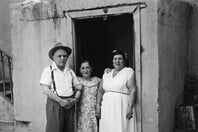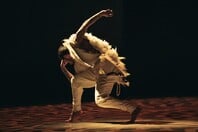Υποτίθεται ότι η συγκεκριμένη χειρονομία έχει τις ρίζες της στον Άγγλους τοξότες (longbowmen) του Εκατονταετούς Πολέμου:A commonly repeated legend claims that the two-fingered salute or V sign derives from a gesture made by longbowmen fighting in the English and Welsh[27] archers at the Battle of Agincourt (1415) during the Hundred Years' War, but no historical primary sources support this contention.[28] This origin legend dictates that the English and Welsh archers who were captured by the French had their index and middle fingers cut off so that they could no longer operate their longbows, and that the V Sign was used by uncaptured and victorious archers in a display of defiance against the enemy. Moreover, it was common practice in warfare of that period to summarily execute common soldiers, since they held no ransom value.
























